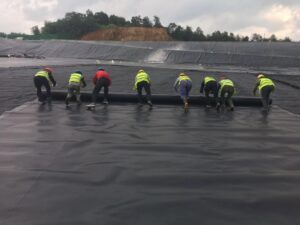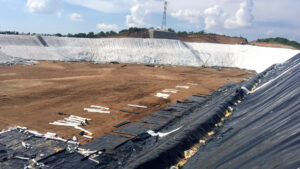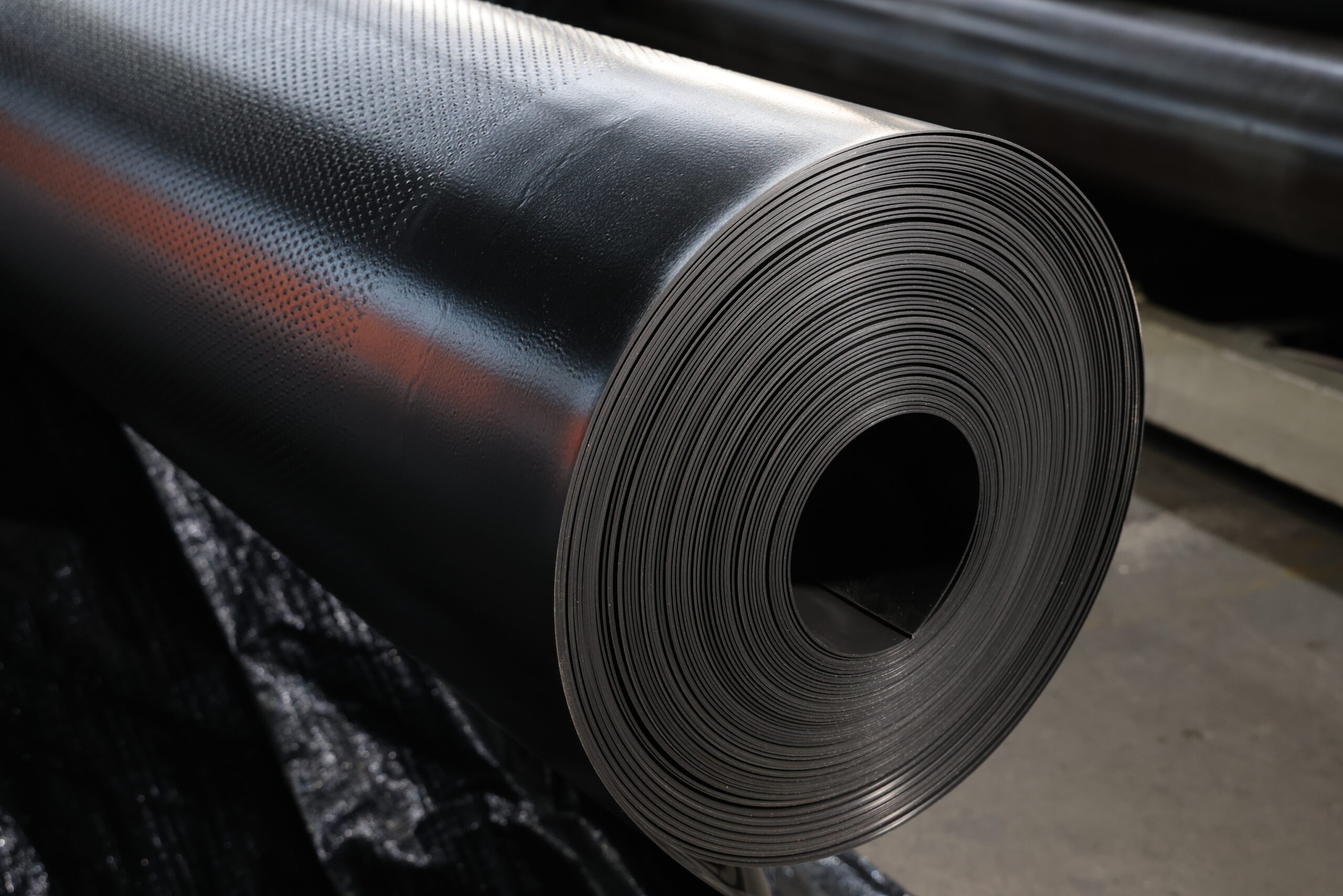What are the thicknesses of geomembranes?
Geomembranes come in various thicknesses depending on their intended application and the specific requirements of the project. The thickness of a geomembrane is typically measured in millimeters (mm) or mils (1 mil = 0.0254 mm).
Here are some common thickness ranges for geomembranes used in different applications:
Landfill Liners: For landfill liners, geomembranes typically range from 0.75 mm (30 mil) to 3.0 mm (120 mil) thick, depending on factors such as the type of waste being contained, the slope of the landfill, and regulatory requirements.
Pond Liners: Geomembranes used in pond liners can vary widely in thickness depending on the size and purpose of the pond. They generally range from 0.5 mm (20 mil) to 2.5 mm (100 mil) thick.
Mining Applications: In mining applications such as heap leach pads or tailings ponds, geomembranes may range from 0.75 mm (30 mil) to 2.0 mm (80 mil) thick.
Water Containment: Geomembranes used for water containment applications like reservoirs, canals, and wastewater treatment ponds typically range from 0.75 mm (30 mil) to 2.5 mm (100 mil) thick.
Aquaculture: Geomembranes used in aquaculture systems can be relatively thin, ranging from 0.3 mm (12 mil) to 1.0 mm (40 mil), depending on factors such as water chemistry and the type of aquatic species being farmed.
It’s important to note that these are general guidelines, and the appropriate thickness of a geomembrane for a specific project should be determined through engineering analysis, considering factors such as environmental conditions, hydraulic pressures, chemical exposure, and durability requirements. Additionally, local regulations and industry standards may dictate minimum thickness requirements for geomembranes used in certain applications.

Is the thicker the geomembrane the better?
While a thicker geomembrane may offer certain advantages in terms of durability and puncture resistance, it’s not necessarily the case that thicker is always better. The suitability of a geomembrane thickness depends on various factors including:
Application Requirements: The thickness of the geomembrane should be chosen based on the specific requirements of the application. For example, a thicker geomembrane might be necessary for containing hazardous waste in a landfill compared to lining a decorative pond in a garden.
Environmental Conditions: The environmental conditions at the site, such as temperature variations, chemical exposure, and UV radiation, can influence the choice of geomembrane thickness. Thicker geomembranes may offer better resistance to these factors.
Installation Considerations: Thicker geomembranes can be more challenging to install, potentially requiring specialized equipment and expertise. They may also be less flexible, making them harder to conform to irregular surfaces.
Cost: Thicker geomembranes typically come at a higher cost compared to thinner ones. Therefore, the cost-effectiveness of the geomembrane thickness should be considered in the overall project budget.
Performance Requirements: The performance requirements of the geomembrane, such as its tensile strength, puncture resistance, and chemical compatibility, should guide the selection of thickness. Thicker geomembranes may offer higher levels of performance in these aspects.
Long-Term Durability: Thicker geomembranes may have a longer service life and require less frequent maintenance compared to thinner ones. This long-term durability can be a significant factor in certain applications, especially where frequent replacements are impractical or costly.
In summary, while thicker geomembranes may offer certain advantages in terms of durability and performance, the choice of thickness should be based on a careful assessment of the specific requirements and conditions of the project. It’s essential to strike a balance between performance, cost, and practical considerations to ensure the most suitable geomembrane thickness is selected for the given application.

Is the thicker the geomembrane, the more expensive it is?
In general, yes, thicker geomembranes tend to be more expensive than thinner ones. Several factors contribute to this cost difference:
Material Costs: Thicker geomembranes require more raw materials to manufacture, which leads to higher material costs.
Manufacturing Process: Thicker geomembranes may require specialized manufacturing processes or equipment, which can increase production costs.
Transportation and Handling: Thicker geomembranes are heavier and bulkier, leading to higher transportation and handling costs compared to thinner materials.
Installation Costs: Thicker geomembranes may require more labor and time to install, as they can be more challenging to handle and weld. This can increase the overall installation costs.
Quality and Performance: Thicker geomembranes often offer higher levels of quality and performance, which can justify their higher cost compared to thinner materials.
While thicker geomembranes may have higher upfront costs, they can also provide benefits such as improved durability, longer service life, and better resistance to punctures and environmental factors. Therefore, the choice of geomembrane thickness should consider the specific requirements of the project, including performance expectations, budget constraints, and long-term maintenance considerations.
In some cases, selecting a thicker geomembrane may be a cost-effective choice if it helps to minimize the need for future repairs or replacements, ultimately reducing the total cost of ownership over the lifespan of the installation. However, it’s essential to evaluate the overall cost-effectiveness of different geomembrane thickness options based on the specific circumstances of the project.
Author
-

Founded in 2002, Tinhy's team focuses on the manufacturing, marketing, installation, application and research and development of geosynthetic materials.
View all posts




